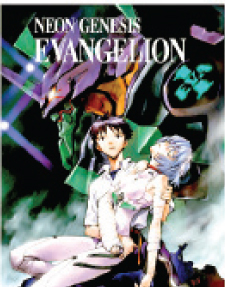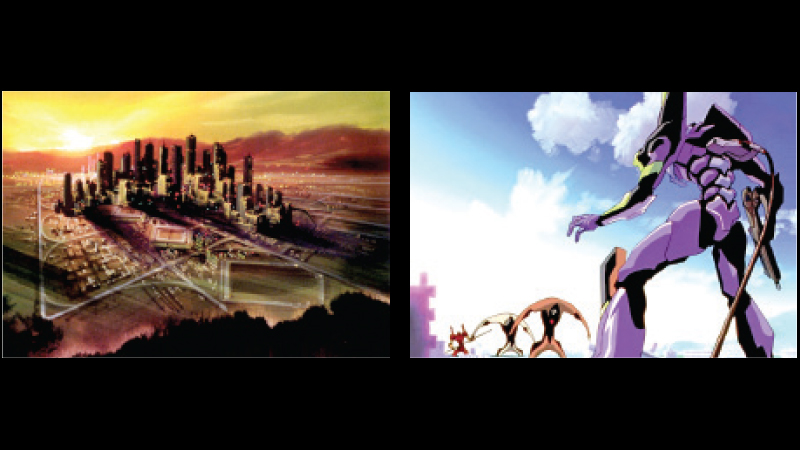First off, let me admit it; I’m not much of an anime fan. Those big eyes, flashing action scenes and cheesy facial expressions ripped straight out of Manga don’t really do much for me. But there are big ones that I enjoy like Katsuhiro Otomo’s dystopian epic – ‘Akira’ and Studio Ghibli’s blockbusters – ‘Spirited Away’, ‘Princess Mononoke’ and ‘Howl’s Moving Castle’. I can also add the existential crisis superhero saga ‘One Punch Man’ to the mix.
 But nothing could prepare me for the madness and sadness that is Neon Genesis Evangelion (NGE). Created over two decades ago, NGE is a fable like no other. It combines religious imagery from Christian eschatology and Jewish Kabbalah, Western philosophy and psychology with fast-paced and gutsy action from the big robots vs. monsters genre.
But nothing could prepare me for the madness and sadness that is Neon Genesis Evangelion (NGE). Created over two decades ago, NGE is a fable like no other. It combines religious imagery from Christian eschatology and Jewish Kabbalah, Western philosophy and psychology with fast-paced and gutsy action from the big robots vs. monsters genre.
26-episode story
The 26-episode story begins with a monster attacking fictional Tokyo 3 in 2015. Our teenage hero Shinji Ikari is thrust into the job of saving the world. But this is where the similarities with other Mecha vs. Kaiju animes end. Shinji reluctantly enters the giant robot Eva Unit 1 to battle the ‘angels’ beginning a journey that will make him question everything.
The setting for NGE is a dying-world where half of humanity has been wiped out after a cataclysm called the ‘Second Impact’. Here, NGE also diverges from other post-apocalyptic and dystopian animes where vibrant neon-lit and cyberpunk cities are the default. Save for the Evas, the high-tech Geo Front underneath Tokyo 3 and the city’s defences; NGE’s world is outfitted with the liminal drab of late 20th century architecture. The streets are depressingly unfilled with scenes cutting to flocks of birds sitting on telephone wires and other forms of urban oblivion like vacant flats, train stations and highways. It is as if time stood still – an eerie reminder for those of us who experienced those gloomy pandemic lockdown days.
Despite the doom and gloom around them, the characters in NGE display surprising tenacity as they try to wrest humanity from annihilation in an upcoming ‘Third Impact’. Even Shinji gets over his brooding self when it’s time to get in the Eva and battle another dreaded angel. Those who survived the ‘Second Impact’ like Shinji’s go-getter guardian Major Misato Katsuragi and NERV (the organisation who developed the Evas) are determined to foil Seele (the illuminate-esque bad guys in NGE) in the face of unbeatable odds, overcoming the trauma of surviving the apocalypse.
Fighting large monsters is a pop-culture staple in Japan since the debut of Godzilla in 1954. The long-held view is that the Kaiju genre was invented to help process Japan’s trauma after being hit by nuclear bombs in WWII; Gojira et al were representations of the explosions but also a creature that can be defeated.
Teenage protagonists
Tossed between hope and despair is the cast of NGE’s teenage protagonists consisting of those tasked with piloting the Eva units. Shinji and the others are forced to confront their demons amidst the angst and identity crises as the show progresses. NGE’s creator, Hideaki Anno had said that his history of clinical depression was the main source for the emphasis on the psychological aspects of the characters.
Besides these tribulations, NGE is rife with religious tones of eschatology and mysticism. The name Neon Genesis Evangelion is Greek and directly translates to ‘New Gospel of Creation’. The three wise men are featured as the supercomputer that runs NERV and the names of the various angels are straight from Jewish texts like the first angel Adam – referenced to Adam Kadmon (Hebrew for ‘Primordial Man’) in Kabblah. Anno had also said that the angels were also inspired by the Oni – the demons in Japanese folklore.
As NGE wraps up, Shinji has to confront himself in light of others around him. The age-old political and social question comes up – ‘should the individual be reconciled to the collective or should the collective reconcile with individual’ among other things. I saw NGE’s original ending as culminative as Shinji achieves a moment of self-realisation, but hardcore fans of Evangelion were disappointed which prompted its creators to make an alternative ending in ‘The End of Evangelion’ (1997) and several sequels to give more closure.
If you are new to anime, NGE is a must watch, especially if you are looking for depth and grit in storytelling. Dubbed the ‘loneliest anime’, NGE has an 18 plus age rating, but mind you this show was made in the late 90s, years before adult animation became a thing. A word of personal advice – soldier through the episode-one until Shinji first battle with the angel or watch the rebuild of the original Evangelion: 2.0 You Can (Not) Advance.
Its age notwithstanding, NGE provides a powerfully complex narrative, leagues ahead of simplistic “hero saves the day” stories which I personally think does more harm than good. In a society shaped by media, happy endings and Deus ex machina moments condition people to seek out saviour figures to save the day. And just like blind devotees waiting for messiahs, we’ve seen how democracy is easily undermined by electing various “heroes” as they come along. NGE is definitely the kind of media we need during a time that requires perseverance and self-awareness.









